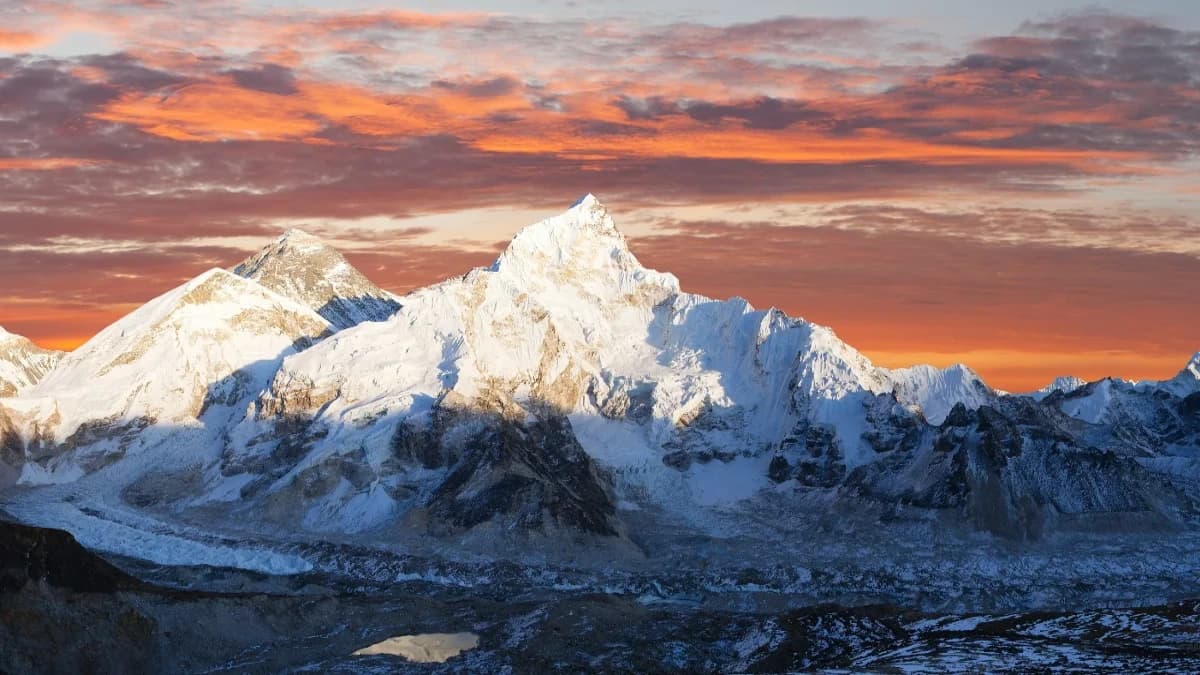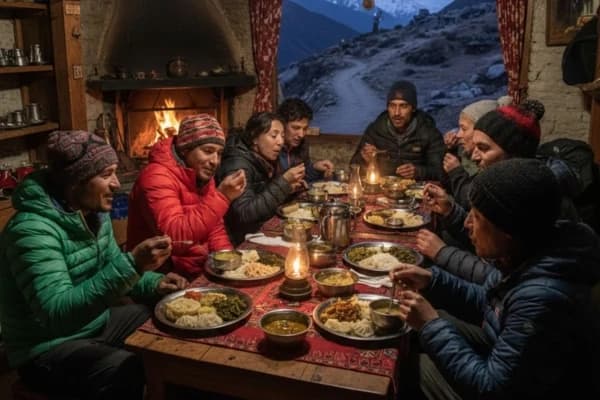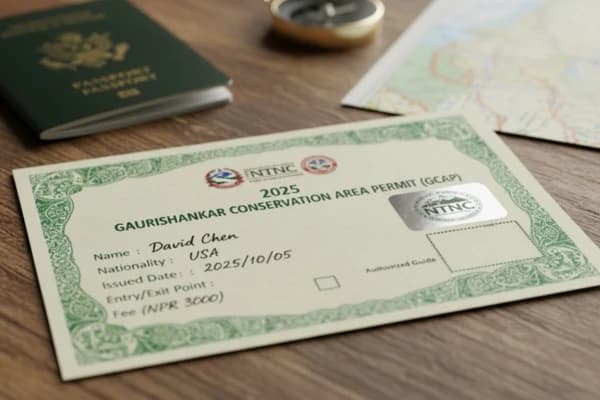Mount Everest, known as Chomolungma in Tibetan and Sagarmatha in Nepali, is the tallest mountain on Earth, soaring to an official height of 8,849 meters (29,032 feet) above sea level. Nestled in the majestic Himalayas, this peak, which is between the border between Nepal and Tibet, has captured human imagination for centuries.
Everest is a physical landmark and a symbol of endurance, adventure, and cultural reverence, attracting climbers, trekkers, researchers, and spiritual seekers from around the globe.
The mountain is special because of its mix of impressive nature, important history, and rich culture. For adventure lovers, the area has tough climbs and famous trails like the Everest Base Camp trek. For scientists and geography fans, Everest shows how the Earth moves, how glaciers work, and what life is like at very high altitudes. It remains a sacred entity for local communities, especially the Sherpas, deeply woven into religious and cultural traditions.
This guide covers everything you need to know about Mount Everest, from its geography and height to climbing history, trekking experiences, fascinating Mount Everest facts, and cultural significance. By the end, you’ll have a comprehensive understanding of why this peak continues to be the ultimate symbol of human exploration and natural wonder.
Every year, adventurers from across the globe challenge themselves to witness the world’s highest peak up close—are you ready to be one of them?
Where is Mount Everest Located?
Mount Everest is part of the Himalayas and sits on the border between Nepal and Tibet (China). On the Nepalese side, it is inside Sagarmatha National Park, a protected area covering more than 1,100 square kilometers in the Solukhumbu District. The park protects glaciers, high-altitude plants, and animals such as snow leopards, Himalayan tahr, and yaks.
On the Tibetan side, Everest is part of the Qomolangma National Nature Preserve. Qomolangma is one of the largest high-altitude protected areas in the world at 36,000 square kilometers. This area includes northern climbing routes, Tibetan villages, and high-altitude plateaus. It is carefully managed to protect the environment while allowing regulated tourism.
How Tall is Mount Everest?
Mount Everest is the highest peak on the face of the Earth, with an official height of 8,849 meters (29,032 feet) above sea level. This measurement was confirmed in 2020 by joint surveys from Nepal and China. The Mount Everest height has been recorded several times over history, starting with the 19th-century British survey and followed by more precise measurements in the 20th and 21st centuries using GPS and satellite technology.
Everest's height also varies significantly over time due to tectonic activity in the Himalayas, which pushes the summit upward by a few millimeters annually. In compared to other high mountains, Everest is still the tallest, with K2 at 8,611 meters and Kangchenjunga at 8,586 meters, confirming its status as the highest peak on Earth.
Mount Everest Geography

Mount Everest is surrounded by other high peaks, including Lhotse (8,516 meters), Nuptse (7,861 meters), and Makalu (8,481 meters). These peaks, along with glaciers and valleys, create the main trekking and climbing routes, like the path to Everest Base Camp. Key landmarks on the trail include Lobuche, Dingboche, and Cho La Pass, which help trekkers acclimatize before higher camps.
Geology and Terrain
When the Indian and Eurasian tectonic plates collided, Mount Everest was created, and the peak is still being pushed upward today. Sedimentary rocks make up its lower slopes, whereas igneous and metamorphic rocks are found higher up. Everest is a high and rugged peak because of the valleys and ridges formed by glaciers like Khumbu and Rongbuk.
Flora and Fauna
Mount Everest and its surroundings support limited but unique wildlife adapted to high altitudes. Snow leopards, Himalayan tahrs, yaks, and Himalayan marmots can all be seen, as well as Himalayan monal birds. Above 5,000 meters, vegetation is scarce, although lower slopes support rhododendrons, junipers, and alpine plants.
Even with hikers and climbers nearby, Sagarmatha National Park ensures that wildlife has a place to live and safeguards delicate ecosystems.
Climate and Weather
Because of its great elevation, Mount Everest receives harsh weather and cold temperatures. While summer brings snowstorms and high winds, winter temperatures can fall below -40°C. When conditions are more stable, pre-monsoon (April–May) and post-monsoon (Sep-Nov) are the ideal times of year for hiking and climbing.
Weather changes rapidly, and storms can make climbing or trekking dangerous. Mount Everest's climate change has also increased glacier melting and avalanche risks, affecting both the environment and the safety of climbers.
History and Expeditions of Mount Everest
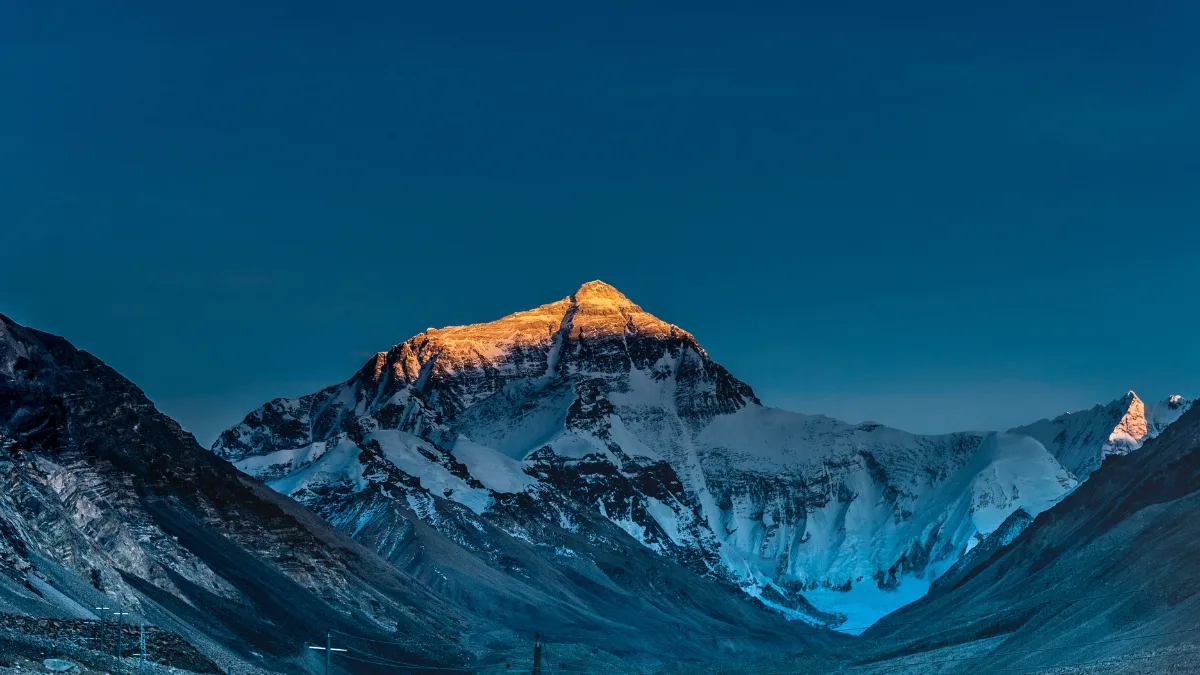 Mount Everest has a long history of exploration and ascents. Early studies in the nineteenth century by British surveyors recognized it as the world's tallest point. The first serious climbing attempts were in the 1920s, when many groups attempted the Southeast Ridge route from Nepal.
Mount Everest has a long history of exploration and ascents. Early studies in the nineteenth century by British surveyors recognized it as the world's tallest point. The first serious climbing attempts were in the 1920s, when many groups attempted the Southeast Ridge route from Nepal.
Cultural and religious significance also influenced early interactions with the mountain. Local communities, especially the Sherpas, viewed Everest (Sagarmatha / Chomolungma) as sacred, which shaped the way climbers approached the region.
Early expeditions faced extreme weather, technical climbing challenges, and high-altitude conditions, laying the foundation for modern mountaineering practices.
First Successful Ascent
The first confirmed successful climb of Mount Everest occurred on May 29, 1953. Sir Edmund Hillary of New Zealand and Tenzing Norgay, a Sherpa from Nepal, gained the summit by the Southeast Ridge route from the Nepal side.
This historic climb proved that humans could survive the extreme conditions of Everest’s Death Zone, above 8,000 meters, where oxygen levels are dangerously low. Their achievement brought global attention to Everest and inspired decades of mountaineering and scientific study in the region.
Major Expeditions Timeline
- 1950s–1960s: After the first ascent in 1953, climbers focused on retracing the Southeast Ridge and exploring the North Ridge, learning how to survive extreme altitudes.
- 1970s: During the 70s, climbers began trying tougher routes like the Southwest Face, using improved gear, ropes, and oxygen.
- 1980s–1990s: More commercial trips happened, leading to record climbs but also accidents like the 1996 disaster, showing how important Sherpa guides and proper support are.
- 2000s–2020s: Today’s climbs focus on safety, planning, and protecting the environment, but avalanches, storms, and other natural dangers are still big challenges.
Aviation and Exploration
Everest has fascinated not just climbers but aviators. In 1933, the first reconnaissance flights over the mountain captured its scale and terrain from the air, followed by additional surveys in 1988 and 1991.
Helicopters later played a key role in high-altitude rescues and assisted ascents between 2005 and 2016, making remote areas of the mountain more accessible. Adventure seekers have also experimented with extreme sports like paragliding, using Everest’s slopes for unique aerial experiences.
Fascinating Mount Everest Facts

Several intriguing characteristics set Mount Everest apart from other mountains. For instance, due to tectonic action, it continues to expand, rising by a few millimeters year. High altitude hardships, such as bitter cold and thin air, have put thousands of climbers to the test and produced incredible tales of human triumph.
The area has special animals and plants, like snow leopards, yaks, and alpine shrubs, that can live in thin air and icy land. Everest has also caught people’s attention around the world through movies, documentaries, and books, inspiring both adventurers and researchers.
From early expeditions to today’s climbs, every trip shows new parts of Mount Everest history, culture, and natural surroundings.
Climbing Mount Everest
Climbing Mount Everest is one of the most challenging and sought-after feats in the world. Preparation is key: climbers must undergo physical and mental training, acclimatize to high altitudes, and understand the mountain’s extreme weather conditions.
Climbers also need the right permits, guides, and gear, like tents, ropes, and extra oxygen. The mountain has several routes, each with its own challenges, and staying safe requires careful planning, local knowledge, and respect for the tough environment.
Today, many commercial trips include Sherpa help, organized planning, and health checks, making it safer for more people to try reaching the top.
Limited guided expedition slots left for 2025—secure your place now with Nepal Gateway Trekking before it’s too late!
Mount Everest Trekking Routes
Climbers can reach the summit of Mount Everest via a number of primary routes. The most well-known is Nepal's Southeast Ridge, which passes past the Khumbu Icefall, Everest Base Camp, and the higher camps prior to the summit. Commercial travel frequently uses this route since it has good support.
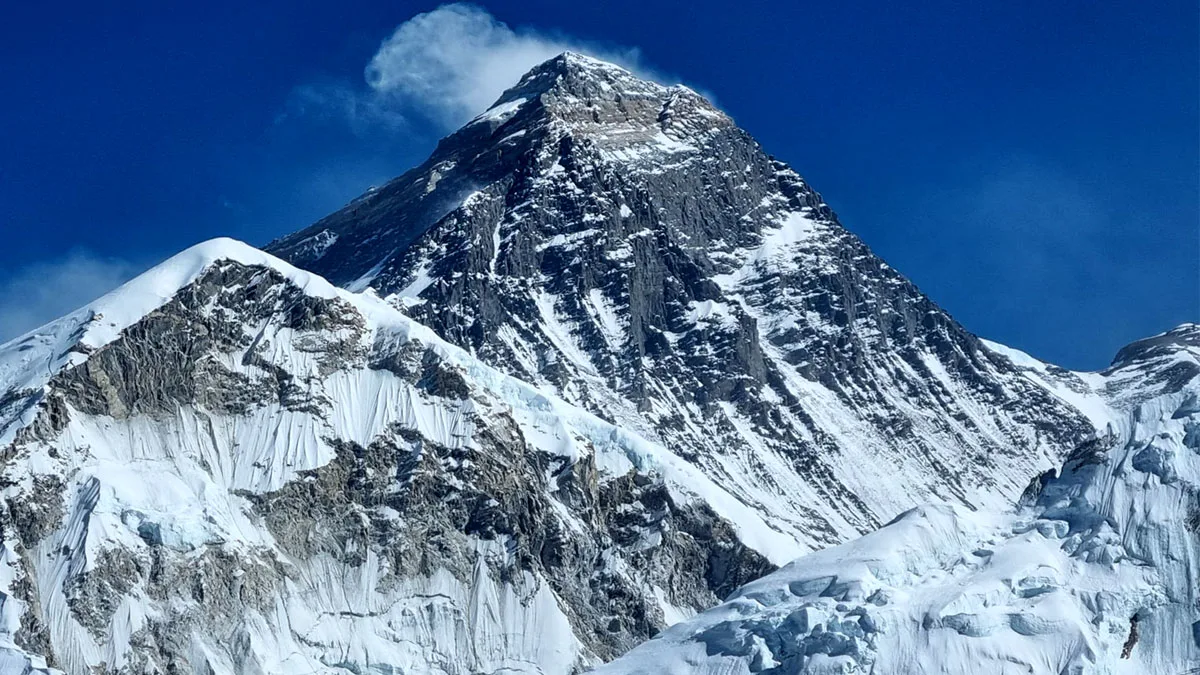
The North Ridge from Tibet gives a different challenge, with high plateaus and steep ridges. Each route has stages from Base Camp to the top, including stops to get used to the altitude and camps where climbers rest and prepare for higher levels. Picking the right route depends on experience, weather, and available support.
Mount Everest Summit Challenges
Reaching the summit of Mount Everest is not just about climbing; it involves overcoming extreme conditions. Above 8,000 meters, climbers enter the Death Zone, where oxygen levels are dangerously low, and even short exposure can be life-threatening.
To stay safe, climbers use extra oxygen, altitude tents, and follow careful schedules to get used to the height. The mountain also has dangers like avalanches, crevasses, sudden storms, and quick drops in temperature. Reaching the top needs strong fitness, careful planning, and help from experienced guides and Sherpas of Mount Everest who deal with these risks every day.
Permits and Regulations
Climbing Mount Everest requires official permits from the Nepalese or Tibetan authorities. In Nepal, climbers must obtain a climbing permit and follow regulations set by the government, including proof of prior high-altitude experience for foreign climbers.
The rules also include protecting the environment, like taking all trash back and using biodegradable bags for waste. These rules help keep people safe, protect nature, and make sure all Everest trips follow the right standards.
Required Permits for Mount Everest:
- Climbing Permit from the Government of Nepal
- Sagarmatha National Park Entry Permit
- Trekkers’ Information Management System (TIMS) card
- Proof of previous high-altitude experience (for foreign climbers)
Costs and Commercial Climbing
Climbing Mount Everest costs a lot of money. Expenses include government permits, guides and Sherpa help, extra oxygen, insurance, and things like tents, food, and transport. On average, a normal guided trip can cost between $35,000 and $60,000, while high-end or fully customized trips can go over $100,000.
Commercial climbing has made Everest accessible to more people, but it also brings responsibilities. Climbers must follow safety protocols, respect local culture, and adhere to environmental regulations to minimize their impact on the fragile high-altitude ecosystem.
Alternative Experiences
Not everyone who visits Mount Everest aims to reach the summit. There are safer ways to enjoy the area. The Everest Base Camp Trek is the most popular, offering incredible views of Everest and nearby mountains along clear trails. Trekkers can choose shorter or longer routes depending on their time and fitness.
Other choices include the Everest Gokyo Lake Trek and the Everest Panorama Trek, both showing amazing scenery, high-altitude lakes, and Sherpa villages. For people who want to stay in the air, scenic flights and helicopter tours give aerial views of Everest and nearby peaks.
Adventure sports like paragliding offer different views, while cultural tours let visitors experience local Sherpa traditions and mountain life without climbing to the top.
- Everest Base Camp Trek: 12-14 days, moderate to strenuous.
- Everest Gokyo Lakes Trek: 14-16 days, slightly harder, higher passes.
- Everest Panorama Trek: 8-10 days, moderate difficulty
Even if summiting isn’t your goal, witness Everest like few ever will—trek today!
Cultural and Ethical Aspects of Mount Everest
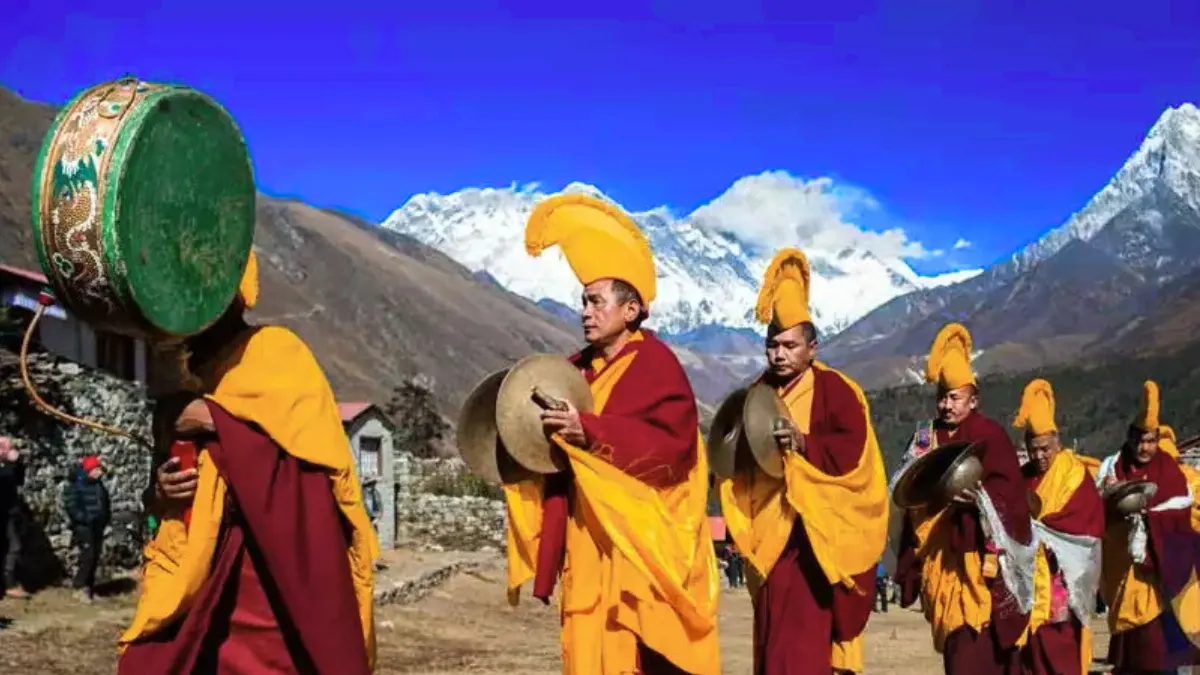
Mount Everest is more than the world’s highest peak; it holds deep cultural and spiritual meaning. Locally called Sagarmatha in Nepal and Chomolungma in Tibet, the mountain is considered sacred. For the Sherpa people, Everest is part of their homeland and central to their traditions, rituals, and way of life. Respecting these cultural values is an integral part of any journey in the Everest region.
In addition to culture, ethics is a problem. Issues with climbing here include litter, too many people, and holding climbers accountable. In order to save the environment and delicate ecosystem, sustainable tourism is crucial.
To ensure that Mount Everest location remains a unique place for nature and culture for upcoming generations, initiatives including cleanups, strict permission regulations, and ethical guides are in place.
Experience the sacred traditions of the Sherpas of Mount Everest while contributing to conservation—your visit makes a difference.
Environmental Conservation
Protecting Mount Everest is a worldwide concern as more climbers and trekkers come each year. Trash left on the mountain, like oxygen bottles, tents, and plastics, is a big threat to the fragile environment.
To help, Nepal has started clean-up projects that take out tons of trash every year. Climbers now have to carry back all their garbage and use biodegradable waste bags. Conservation also includes stricter permit rules, community projects in Sagarmatha National Park, and programs that teach visitors to respect the environment.
Safety and Responsibilities
Climbing or trekking around Mount Everest comes with serious risks, making safety a shared responsibility. Climbers must prepare with proper training, reliable gear, and experienced guides to reduce dangers such as altitude sickness, avalanches, and sudden weather changes.
Following ethics is another aspect of responsibility. Travelers must observe environmental regulations, show consideration for other climbers, and respect local culture. By emphasizing behavior and safety, tourists contribute to the preservation of the mountain and the local population.
Recent Updates and News
Mount Everest makes the news every climbing season. From record-breaking climbs to new safety rules, the mountain shows both the successes and challenges of high-altitude climbing.
This part shows the newest updates, like summit records, rule changes, rescue missions, and conservation projects. Knowing about these updates is important for anyone planning to trek or climb in the Everest area.
Latest Climbing Statistics (2020s)
As of 2024, a total of 7,269 individuals have reached the summit of Mount Everest, completing 12,884 successful ascents when repeat climbs are included. The 2025 season added more achievements, with 165 climbers reaching the summit on May 18 and another 104 climbers on May 19.
One of the standout records came from Kenton Cool, who summited Everest for the 19th time. Which is also the most by any non-Sherpa climber. These statistics show both the popularity of Everest and the continued push of climbers to test their limits on the world’s highest mountain.
New Trekking or Climbing Regulations
Recent years have brought stricter rules to improve safety and protect Mount Everest. Climbers must now show proof of prior experience on at least one 7,000-meter peak in Nepal, supported by expedition logs and summit photos.
The government has also set environmental rules, like using biodegradable waste bags and strict policies for carrying trash. While solo trekking is limited in other parts of Nepal, the Everest region is still open, giving trekkers more flexibility. These updates try to balance adventure with responsibility.
Recent Accidents or Rescue Operations
Even with better safety measures, Mount Everest is still very dangerous. The perils of high-altitude climbing were brought to light in 2023 when twelve climbers died and five went missing. Numerous missions have been successfully carried out by rescue teams, often in very bad weather.
Approximately one-third of fatalities over 6,000 meters are attributed to avalanches, making them one of the greatest threats. These incidents serve as a reminder to climbers of Everest's unpredictability and the value of readiness and vigilance.
Updates on Environmental Initiatives
In recent years, the importance of protecting Mount Everest's ecosystem has increased. The Mountain Clean-up Campaign in 2023 helped lessen the long-term harm caused by discarded plastics and equipment by clearing almost 34,000 kilos of rubbish in 45 days.
Projects like the Himalaya Climate & Environment Protection Program promote sustainable mountain practices, while new ideas such as portable solar tents and incinerator toilets are being tested at Base Camp. These efforts aim to preserve Everest’s fragile ecosystem for future generations.
Summary
Mount Everest stands as the highest peak in the world and a symbol of human endurance, natural wonder, and cultural significance. From its towering height and history of legendary climbs to its role in science and adventure tourism, Everest continues to inspire people across the globe.
At the same time, protecting the environment, respecting Sherpa culture, and practicing sustainable tourism are important to keep this fragile area safe. Whether climbing, trekking, or just learning about it, Everest shows that care and exploration must go together.
Join thousands who’ve dared to stand in the shadow of the world’s highest peak—start planning your Everest adventure today. Contact Nepal Gateway Trekking Today!!
FAQs
What is the height of Mount Everest?
Mount Everest stands at 8,849 meters (29,032 feet) above sea level, making it the highest peak on Earth.
Who first climbed Mount Everest?
The first confirmed ascent was on May 29, 1953, by Sir Edmund Hillary from New Zealand and Tenzing Norgay, a Sherpa from Nepal.
Who was the first woman to climb Everest?
The first woman to reach the summit was Junko Tabei of Japan in 1975, paving the way for female climbers worldwide.
How many people have summited Everest?
As of 2024, 7,269 individuals have summited Everest, with a total of 12,884 successful ascents including repeat climbers.
What is the Death Zone?
The Death Zone refers to altitudes above 8,000 meters, where oxygen levels are too low to sustain human life for long periods. Exposure here without supplemental oxygen is extremely dangerous.
Can beginners trek to Everest Base Camp?
Yes, beginners can trek to Everest Base Camp if they are physically fit and follow proper schedules to get used to the altitude. It’s strongly recommended to go with guided treks and experienced Sherpas of Mount Everest.
How is climate change affecting Everest?
Rising temperatures are accelerating glacier melting, increasing the risk of avalanches, and affecting water sources and local ecosystems.
What are the major climbing routes?
The main routes are the Southeast Ridge from Nepal and the North Ridge from Tibet, each with different challenges, camps, and terrain.
How much does it cost to climb Everest?
A guided expedition can cost between $35,000 and $60,000, including permits, Sherpas, oxygen, and logistics. Premium packages may exceed $100,000.
How can one experience Everest without climbing?
Visitors can experience Everest through trekking (Everest Base Camp, Gokyo Lake Trek, Panorama Trek), scenic flights or helicopter tours, and cultural visits to Sherpa villages. Adventure sports like paragliding also offer unique perspectives.
What is the best time to visit Mount Everest?
The best time to visit Mount Everest is during the pre-monsoon (March–May) or post-monsoon (September–November) seasons. Pre-monsoon is ideal for climbing due to warmer temperatures and longer daylight, while post-monsoon provides stunning, clear mountain views with less cloud cover.
Do I need insurance for Everest treks or climbs?
Indeed, insurance is crucial and frequently necessary for excursions to the summit of Everest. Trekkers and climbers should have high-altitude medical coverage that covers rescue and evacuation. In this isolated and harsh region, insurance helps cover mishaps, altitude sickness, helicopter rescues, and other situations.
